FarmDain, a Decision Support System for Dairy Sheep and Goat Production
Abstract
Simple Summary
Abstract
1. Introduction
2. Materials and Methods
2.1. System Architecture
2.2. Data Management Service
2.3. Application Programming Interface
2.4. Authentication and Authorization Service
2.5. Decision Support Tools
2.6. End-User Application
2.7. Collected Data
- General farm information: (Farm ID, location, farming system).
- Labor data (number of workers, family labor used, full-time/part-time-seasonal labor, hours of work per month).
- Livestock data (breed type, flock size, replacement rate, total number of newborns, total number of animals slaughtered or sold, number of deaths).
- Milk production traits and quality of produced milk (total milk production, average milk yield per animal, lactation period length, milk composition (fat, protein, lactose, and solids-non-fat (SNF)) and microbiological parameters including Total Viable Count (TVC) and Somatic Cell Count (SCC)).
- Grazing and feeding practices (feedstuffs used and quantities in all production stages, chemical composition).
- Reproduction management practices and techniques [onset of the breeding season, the onset of lambing/kidding period, prolificacy, number of abortions, estrus synchronization, artificial insemination (AI).
- Suckling period management (natural or artificial rearing).
- Milking (hand or machine milking, number of milkers, milking per day, milking duration, use of gloves, post-dipping, cleaning and disinfection, and other practices).
- Stable (type of housing and size).
- Veterinary and general practices (electronic identification systems, claw trimming, intramammary dry-treatment, anthelmintic treatment, vaccination program, genotyping for resistance to scrapie and other diseases).
- Economic data for income and variable costs (subsidies, prices of milk, meat, feeding and animal sales, costs of labor, utility, transportation, milking parlor, land, veterinary and other).
- Data on the Animal level
- Animal (species, genealogy, age, lactation number).
- Welfare and health indicators (head: skin lesions, injuries or abscesses, limbs: overgrown claws and arthritis, udder: asymmetry, skin lesions, abscesses, and fibrosis, records of California Mastitis Test (CMT)).
- Reproduction strategies (selected breeding method, dates of (i) natural mating, (ii) AI, (iii) entrance of males after AI, (iv) insertion of progestogen sponges, (v) rams’ ID used in AI);
- Lambing/Kidding period (number and gender of newborns per animal, date of weaning);
- Milk recordings (date of milk recording, daily milk yield and corresponding milk fat-, protein-, lactose-, and SNF content).
- Ultrasound data (pregnancy, pathological findings).
- Data at this detailed level can provide valuable information about each animal and the milk produced. This type of information is analyzed by the DSS module to provide insights about the enterprise operation and allow for milk traceability on a very detailed level.
2.8. A Case Study Application
3. Results
3.1. User Interface
- Login. Initially, the users must access the application with their unique credentials.
- Farm management. New farms can be created, or already recorded farms can be edited (Figure 5). Data collected are used to identify and describe each farm.
- Management of farm-level data. These kinds of data input are made available to the user after the initial farm input and provide detailed information about livestock, labor, milk production, grazing and feeding, reproduction, milking, stabling and general practices applied in the farm, veterinary information, and economic parameters. Data input and editing are achieved with a unified interface and easily identified buttons (Figure 6).
- Management of animal data; Following the same interface, the user can provide or edit information on the animal level Information includes general livestock info, reproduction data, milk recordings, and laboratory and ultrasound results (Figure 7). Milking recordings and ultrasound results can also be viewed per ranch on a different tab for easy access.
- Management of laboratory analysis data; The user can input or edit results about the chemical composition of feedstuffs and milk and the microbiological profile of milk and dairy products (Figure 8).
3.2. Main Features
3.2.1. Reports
3.2.2. Traceability
3.3. Case Study Results
4. Discussion
5. Conclusions
Supplementary Materials
Author Contributions
Funding
Institutional Review Board Statement
Informed Consent Statement
Data Availability Statement
Conflicts of Interest
References
- Fountas, S.; Carli, G.; Sørensen, C.G.; Tsiropoulos, Z.; Cavalaris, C.; Vatsanidou, A.; Liakos, B.; Canavari, M.; Wiebensohn, J.; Tisserye, B. Farm Management Information Systems: Current Situation and Future Perspectives. Comput. Electron. Agric. 2015, 115, 40–50. [Google Scholar] [CrossRef]
- Douphrate, D.I.; Hagevoort, G.R.; Nonnenmann, M.W.; Lunner Kolstrup, C.; Reynolds, S.J.; Jakob, M.; Kinsel, M. The Dairy Industry: A Brief Description of Production Practices, Trends, and Farm Characteristics Around the World. J. Agromedicine 2013, 18, 187–197. [Google Scholar] [CrossRef] [PubMed]
- Gianni, M.; Gotzamani, K.; Vouzas, F. Food Integrated Management Systems: Dairy Industry Insights. Int. J. Qual. Reliab. Manag. 2017, 34, 194–215. [Google Scholar] [CrossRef]
- Duguma, B. A Survey of Management Practices and Major Diseases of Dairy Cattle in Smallholdings in Selected Towns of Jimma Zone, South-Western Ethiopia. Anim. Prod. Sci. 2020, 60, 1838–1849. [Google Scholar] [CrossRef]
- Arsenos, G.; Vouraki, S.; Ragkos, A.; Theodoridis, A. Trends and Challenges for Sustainable Development of Sheep and Goat Systems. In Pastoralism and Sustainable Development, Book of Abstracts; CIHEAM: Bari, Italy, 2021; p. 10. [Google Scholar]
- Burnstein, F. Handbook on Decision Support Systems; Springer: Berlin/Heidelberg, Germany, 2008. [Google Scholar]
- Vouraki, S.; Skourtis, I.; Psichos, K.; Jones, W.; Davis, C.; Johnson, M.; Riaguas Rupérez, L.; Theodoridis, A.; Arsenos, G. A decision support system for economically sustainable sheep and goat farming. Animals 2020, 10, 2421. [Google Scholar] [CrossRef]
- Balhara, S.; Singh, R.P.; Ruhil, A.P. Data Mining and Decision Support Systems for Efficient Dairy Production. Vet. World 2021, 14, 1258–1262. [Google Scholar] [CrossRef]
- Solano, C.; León, H.; Pérez, E.; Tole, L.; Fawcett, R.H.; Herrero, M. Using farmer decision-making profiles and managerial capacity as predictors of farm management and performance in Costa Rican dairy farms. Agric. Syst. 2006, 88, 395–428. [Google Scholar] [CrossRef]
- Ursinus, W.W.; Schepers, F.; De Mol, R.M.; Bracke, M.B.M.; Metz, J.H.M.; Koerkamp, P.W.G.G. COWEL: A decision support system to assess welfare of husbandry systems for dairy cattle. Anim. Welf. 2009, 18, 545–552. [Google Scholar] [CrossRef]
- Bryant, J.R.; Ogle, G.; Marshall, P.R.; Glassey, C.B.; Lancaster, J.A.S.; Garcia, S.C.; Holmes, C.W. Description and evaluation of the Farmax Dairy Pro decision support model. N. Z. J. Agric. Res. 2010, 53, 13–28. [Google Scholar] [CrossRef]
- Giordano, J.O.; Fricke, P.M.; Wiltbank, M.C.; Cabrera, V.E. An economic decision-making support system for selection of reproductive management programs on dairy farms. J. Dairy Sci. 2011, 94, 6216–6232. [Google Scholar] [CrossRef]
- Baudracco, J.; Lopez-Villalobos, N.; Holmes, C.W.; Comeron, E.; Macdonald, K.A.; Barry, T.N.; Friggens, N. e-Cow: An animal model that predicts herbage intake, milk yield and live weight change in dairy cows grazing temperate pastures, with and without supplementary feeding. Animal 2012, 6, 980–993. [Google Scholar] [CrossRef] [PubMed]
- Cabrera, V.E. DairyMGT: A suite of decision support systems in dairy farm management. In Decision Support System; InTech Open: Rijeka, Croatia, 2012. [Google Scholar] [CrossRef]
- Kukar, M.; Vračar, P.; Košir, D.; Pevec, D.; Bosnić, Z. AgroDSS: A decision support system for agriculture and farming. Comput. Electron. Agric. 2019, 161, 260–271. [Google Scholar]
- Pimpa, A.; Eiamkanitchat, N.; Phatsara, C.; Moonmanee, T. Decision support system for dairy cattle management using computational intelligence technique. In Proceedings of the 2019 7th International Conference on Computer and Communications Management, Bangkok, Thailand, 27–29 July 2019; pp. 181–185. [Google Scholar]
- CSIRO. GrazPlan. Available online: https://grazplan.csiro.au/ (accessed on 18 March 2023).
- The Cool Farm Tool. Available online: https://coolfarmtool.org/coolfarmtool/ (accessed on 28 December 2022).
- The Ohio State University. Sorting through the Information on Sheep and Goat Parasite Control: A Decision Making Support Tool. Available online: https://vet.osu.edu/extension/beef-sheep-resources/sheep-and-goat-parasite-control-decision-making-support-tool (accessed on 28 December 2022).
- Häni, F.; Braga, F.; Stämpfli, A.; Keller, T.; Fischer, M.; Porsche, H. RISE, a tool for holistic sustainability assessment at the farm level. Int. Food Agribus. Man. Rev. 2003, 6, 78–90. [Google Scholar]
- Meul, M.; Passel, S.; Nevens, F.; Dessein, J.; Rogge, E.; Mulier, A.; Hauwermeiren, A. MOTIFS: A monitoring tool for integrated farm sustainability. Agron. Sustain. Dev. 2008, 28, 321–332. [Google Scholar] [CrossRef]
- Gerrard, C.L.; Smith, L.G.; Pearce, B.; Padel, S.; Hitchings, R.; Measures, M. Public goods and farming. In Farming for Food and Water Security. Sustainable Agriculture Reviews; Lichtfouse, E., Ed.; Springer: Dordrecht, The Netherlands, 2012; Volume 10, pp. 1–22. [Google Scholar]
- Agritec Software—Ovitec. Available online: https://www.agritecsoft.com/ovitec/en/ (accessed on 28 December 2022).
- Belanche, A.; Martín-García, A.I.; Álvarez, J.F.; Pleguezuelos, J.; Mantecón, Á.R.; Yáñez-Ruiz, D.R. Optimizing management of dairy goat farms through individual animal data interpretation: A case study of smart farming in Spain. Agric. Syst. 2019, 173, 27–38. [Google Scholar] [CrossRef]
- Voulodimos, A.S.; Patrikakis, C.Z.; Sideridis, A.B.; Ntafis, V.A.; Xylouri, E.M. A complete farm management system based on animal identification using RFID technology. Comput. Electron. Agric. 2010, 70, 380–388. [Google Scholar] [CrossRef]
- Cappai, M.G.; Rubiu, N.G.; Nieddu, G.; Bitti, M.P.L.; Pinna, W. Analysis of fieldwork activities during milk production recording in dairy ewes by means of individual ear tag (ET) alone or plus RFID based electronic identification (EID). Comput. Electron. Agric. 2018, 144, 324–328. [Google Scholar] [CrossRef]
- Rose, D.C.; Sutherland, W.J.; Parker, C.; Lobley, M.; Winter, M.; Morris, C.; Twining, S.; Ffoulkes, C.; Amano, T.; Dicks, L.V. Decision support tools for agriculture: Towards effective design and delivery. Agric. Syst. 2016, 149, 165–174. [Google Scholar] [CrossRef]
- Rossi, V.; Salinari, F.; Poni, S.; Caffi, T.; Bettati, T. Addressing the implementation problem in agricultural decision support systems: The example of vite.net®. Comput. Electron. Agric. 2014, 100, 88–99. [Google Scholar] [CrossRef]
- Carrer, M.J.; Filho, H.M.D.S.; Batalha, M.O. Factors influencing the adoption of Farm Management Information Systems (FMIS) by Brazilian citrus farmers. Comput. Electron. Agric. 2017, 138, 11–19. [Google Scholar] [CrossRef]
- Heras-Saizarbitoria, I.; Boiral, O. ISO 9001 and ISO 14001: Towards a Research Agenda on Management System Standards*. Int. J. Manag. Rev. 2013, 15, 47–65. [Google Scholar] [CrossRef]
- King, G.; Wang, H. HTTPA: HTTPS Attestable Protocol. In Advances in Information and Communication, Proceedings of the 2023 Future of Information and Communication Conference (FICC), San Francisco, CA, USA, 3–4 March 2022; Springer Nature: Cham, Switzerland, 2022; Volume 2, pp. 811–823. [Google Scholar]
- PostgreSQL: About. Available online: https://www.postgresql.org/about/ (accessed on 23 June 2022).
- Koschel, A.; Astrova, I.; Blankschyn, M.; Schöner, D.; Schulze, K. Evaluating the RESTfulness of “APIs from the Rough”. In Proceedings of the 15th International Conference on Web Information Systems and Technologies, Vienna, Austria, 18–20 September 2019; Volume 1: WEBIST, pp. 281–288. [Google Scholar]
- GraphQL|A Query Language for Your API. Available online: https://graphql.org/ (accessed on 24 June 2022).
- GraphQL. Specification Versions. Available online: http://spec.graphql.org/ (accessed on 24 June 2022).
- Instant GraphQL APIs on Your Data|Built-in Authz & Caching. Available online: https://hasura.io/ (accessed on 26 June 2022).
- 3Factor Canonical App. Available online: https://3factor.app/use-cases.html (accessed on 30 March 2023).
- Sewak, M.; Singh, S. Winning in the Era of Serverless Computing and Function as a Service. In Proceedings of the 2018 3rd International Conference for Convergence in Technology (I2CT), Pune, India, 6–8 April 2018; pp. 1–5. [Google Scholar]
- Ivanov, V.; Smolander, K. Implementation of a DevOps Pipeline for Serverless Applications. In Product-Focused Software Process Improvement; Kuhrmann, M., Schneider, K., Pfahl, D., Amasaki, S., Ciolkowski, M., Hebig, R., Tell, P., Klünder, J., Küpper, S., Eds.; Springer International Publishing: Cham, Switzerland, 2018; pp. 48–64. [Google Scholar]
- Fraser, B.Y. Site Security Handbook; Internet Engineering Task Force: Fremont, CA, USA, 1997. [Google Scholar]
- Auth0: Secure Access for Everyone. But Not Just Anyone. Available online: https://auth0.com/ (accessed on 24 June 2022).
- Jones, M.; Bradley, J.; Sakimura, N. JSON Web Token (JWT); Internet Engineering Task Force: Fremont, CA, USA, 2015. [Google Scholar]
- Ruhi Velasco, E. Web Authorization and Authentication for Single Page Applications (SPAs). Autorización y Autentificación Web para Single Page Applications (SPAs). Bachelor’s Thesis, Universitat Politècnica de Catalunya, Barcelona, Spain, 2018. [Google Scholar]
- Power, D. Categorizing dss applications and products. In Decision Support Systems: Concepts and Resources for Managers; Greenwood Publishing Group: Santa Barbara, CA, USA, 2002; pp. 12–21. ISBN 978-1-56720-497-1. [Google Scholar]
- Vue.js—The Progressive JavaScript Framework|Vue.Js. Available online: https://vuejs.org/ (accessed on 25 June 2022).
- Kouraklis, J. MVVM as Design Pattern. In MVVM in Delphi: Architecting and Building Model View ViewModel Applications; Apress: New York, NY, USA, 2016; ISBN 978-1-4842-2213-3. [Google Scholar]
- Kexugit Patterns—WPF Apps with the Model-View-ViewModel Design Pattern. Available online: https://docs.microsoft.com/en-us/archive/msdn-magazine/2009/february/patterns-wpf-apps-with-the-model-view-viewmodel-design-pattern (accessed on 25 June 2022).
- Gavrilă, V.; Bajenaru, L.; Dobre, C. Modern Single Page Application Architecture: A Case Study. Stud. Inform. Control 2019, 28, 231–238. [Google Scholar] [CrossRef]
- Fink, G.; Flatow, I. Introducing Single Page Applications. In Pro Single Page Application Development: Using Backbone.js and ASP.NET; Apress: New York, NY, USA, 2014; pp. 3–13. ISBN 978-1-4302-6673-0. [Google Scholar]
- Progressive Web Apps: Escaping Tabs without Losing Our Soul. Available online: https://infrequently.org/2015/06/progressive-apps-escaping-tabs-without-losing-our-soul/ (accessed on 25 June 2022).
- European Parliament. Report on the Current Situation and Future Prospects for the Sheep and Goat Sectors in the EU (2017/2117(INI)). 2018. Available online: https://www.europarl.europa.eu/doceo/document/A-8-2018-0064_EN.pdf (accessed on 29 December 2022).
- Lima, E.; Hopkins, T.; Gurney, E.; Shortall, O.; Lovatt, F.; Davies, P.; Williamson, G.; Kaler, J. Drivers for precision livestock technology adoption: A study of factors associated with adoption of electronic identification technology by commercial sheep farmers in England and Wales. PLoS ONE 2018, 13, e0190489. [Google Scholar] [CrossRef] [PubMed]
- Payne, F.A.; Thompson, C.; Luck, B.; Moore, J.R.; Tabayehnejad, N. Development of a milk transport security system. In Proceedings of the Food Processing Automation Conference, Providence, RI, USA, 28–29 June 2008; p. 33. [Google Scholar]
- Mania, I.; Delgado, A.M.; Barone, C.; Parisi, S. Traceability in the Dairy Industry in Europe; Springer Nature: Cham, Switzerland, 2018. [Google Scholar]
- Theodoridis, A.; Vouraki, S.; Morin, E.; Koutouzidou, G.; Arsenos, G. Efficiency Analysis and Identification of Best Practices and Innovations in Dairy Sheep Farming. Sustainability 2022, 14, 13949. [Google Scholar] [CrossRef]
- European Commission. Commission Regulation (EC) No 2230/2004 of 23 December 2004 laying down detailed rules for the implementation of European Parliament and Council Regulation (EC) No 178/2002 with regard to the network of organisations operating in the fields within the European Food Safety Authority’s mission. Off. J. Eur. Union 2004, 379, 64–67. [Google Scholar]
- Thunnissen, D.P. Propagating and Mitigating Uncertainty in the Design of Complex Multidisciplinary Systems. Ph.D. Thesis, California Institute of Technology, Pasadena, CA, USA, 2005. Available online: https://resolver.caltech.edu/CaltechETD:etd-01072005-162147 (accessed on 19 December 2022). [CrossRef]
- European Commission. Communication from the Commission to the European Parliament, the European Council, the Council, the European Economic and Social Committee and the Committee of the Regions. 2019. Available online: https://eur-lex.europa.eu/resource.html?uri=cellar:b828d165-1c22-11ea-8c1f-01aa75ed71a1.0002.02/DOC_1&format=PDF (accessed on 29 February 2022).
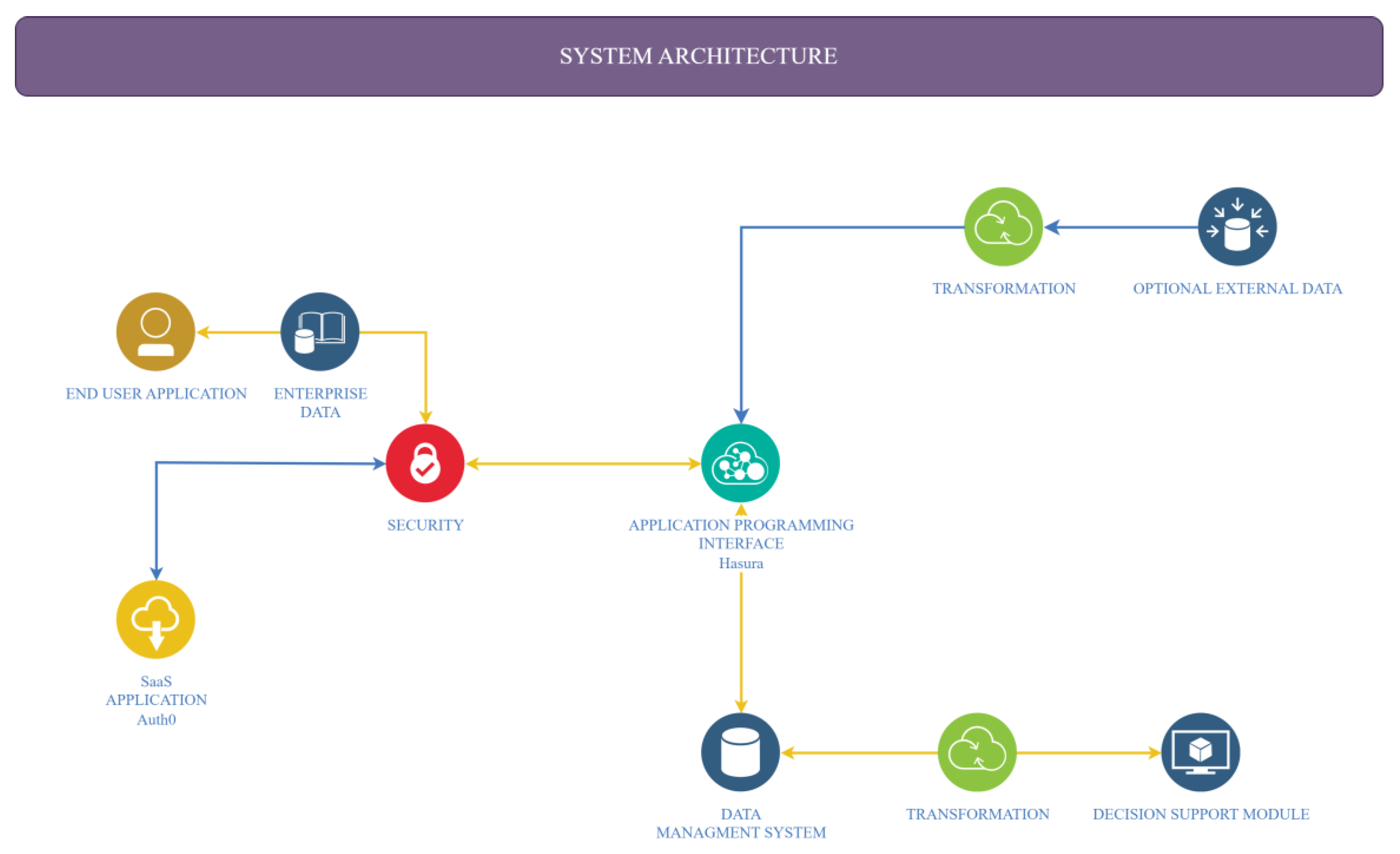

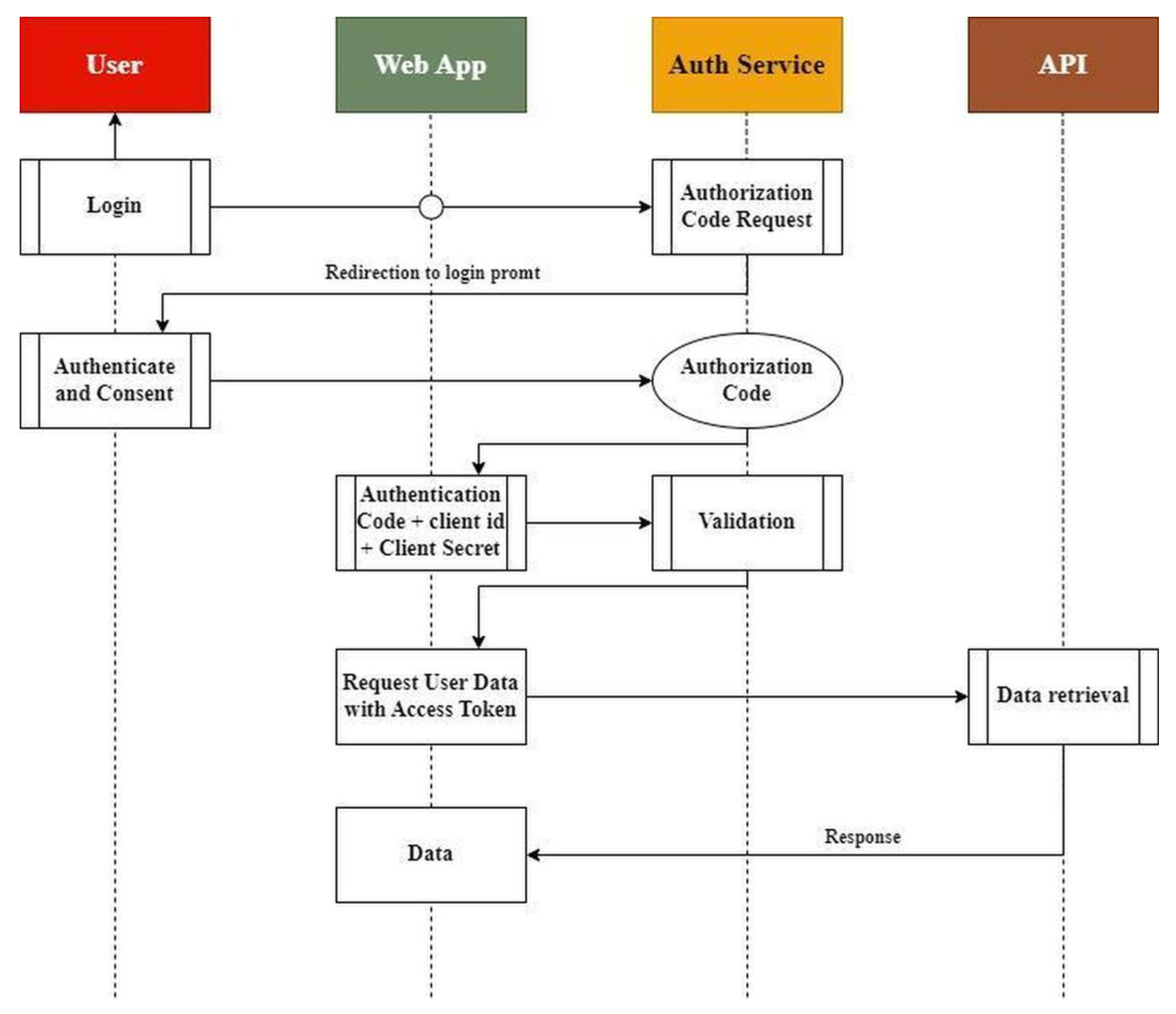
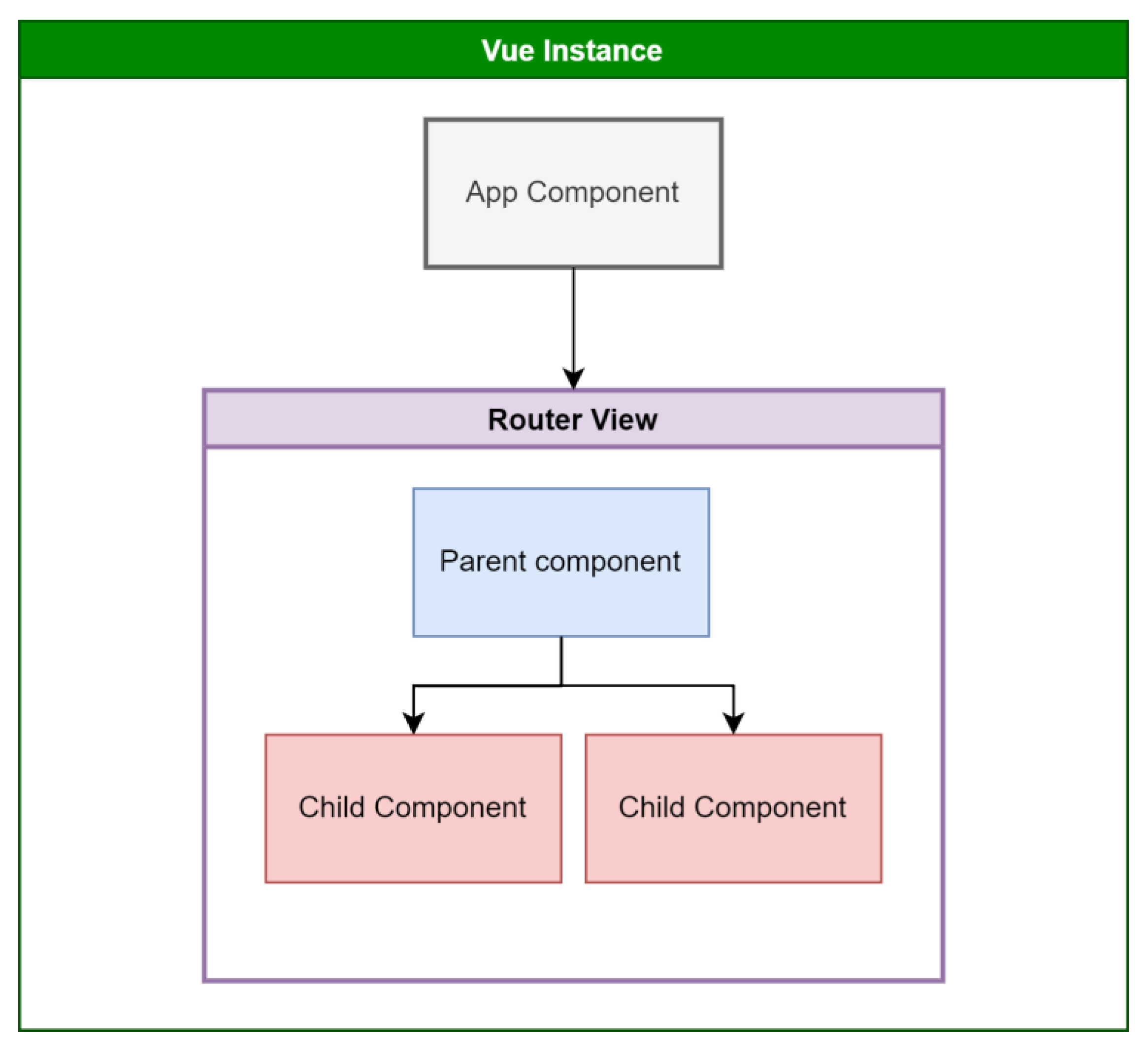
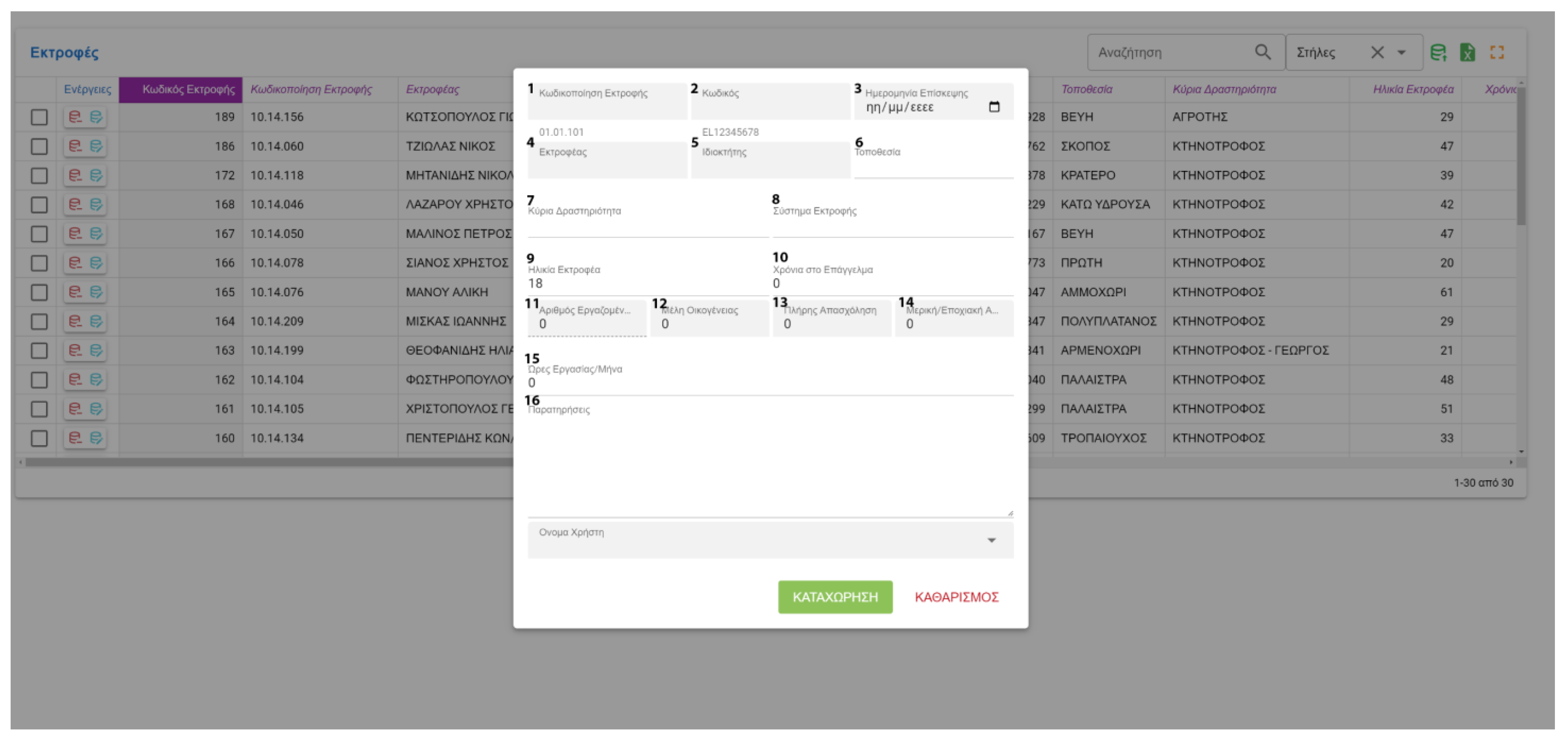

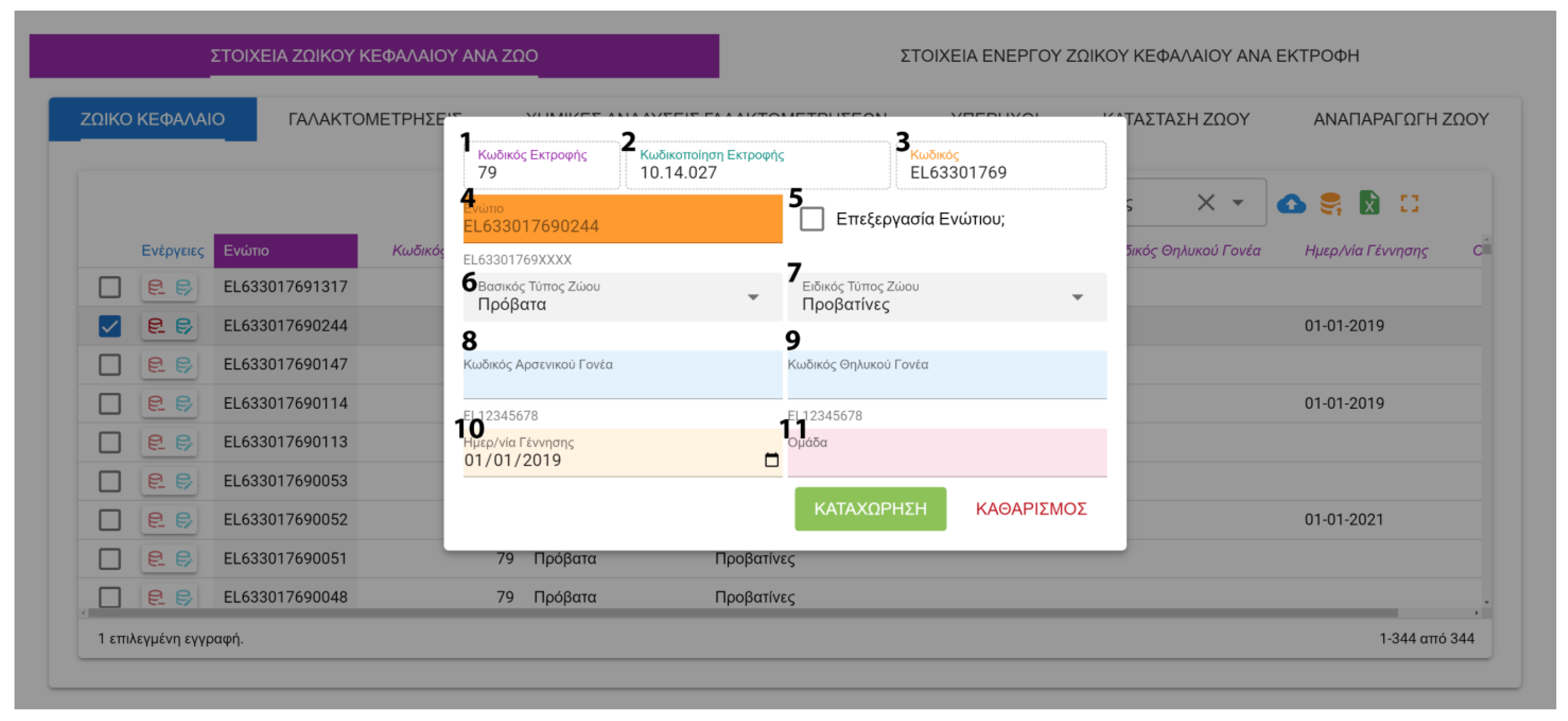
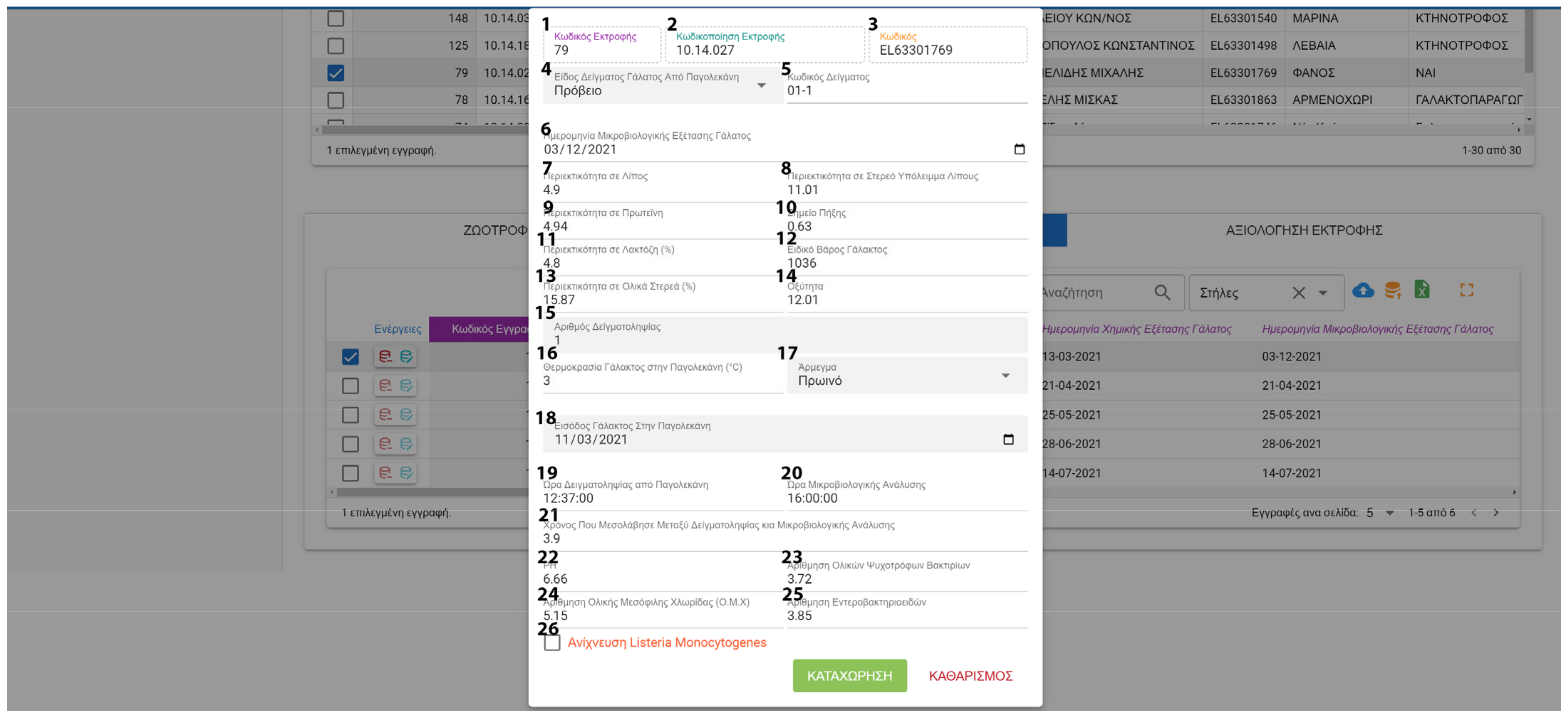
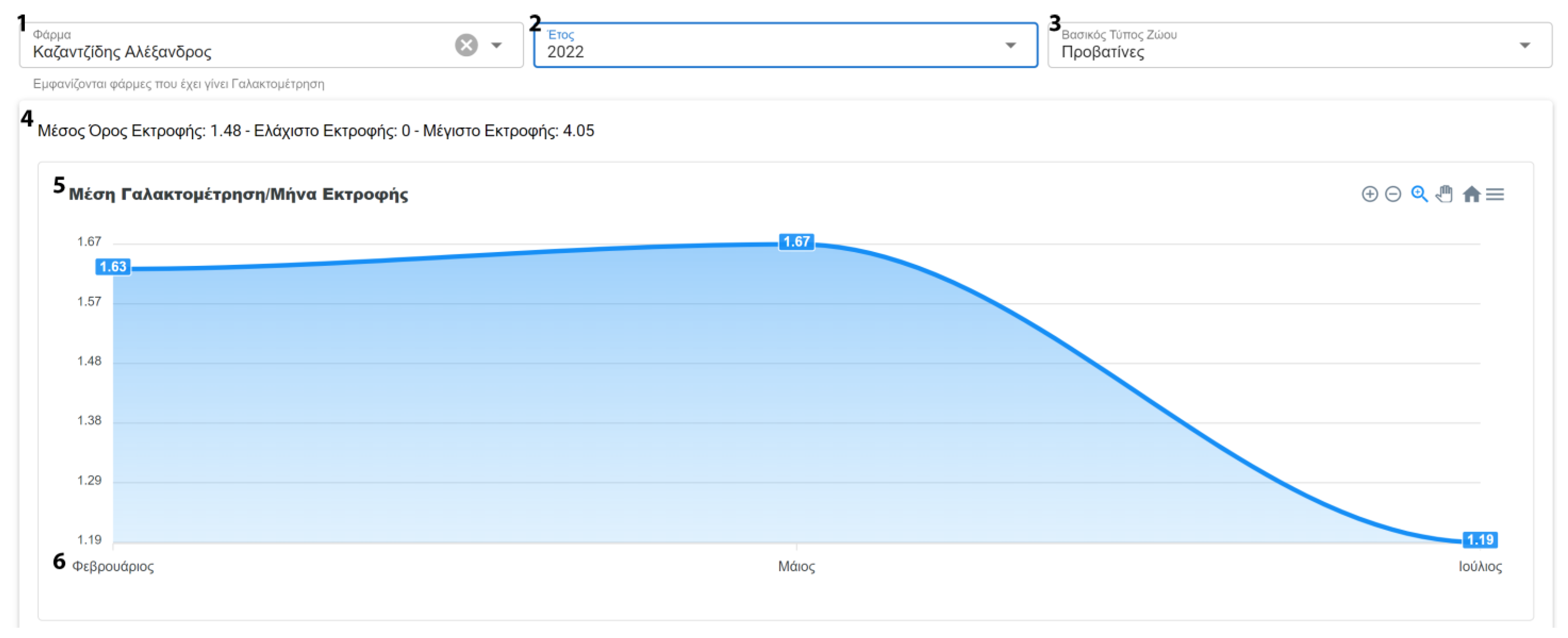
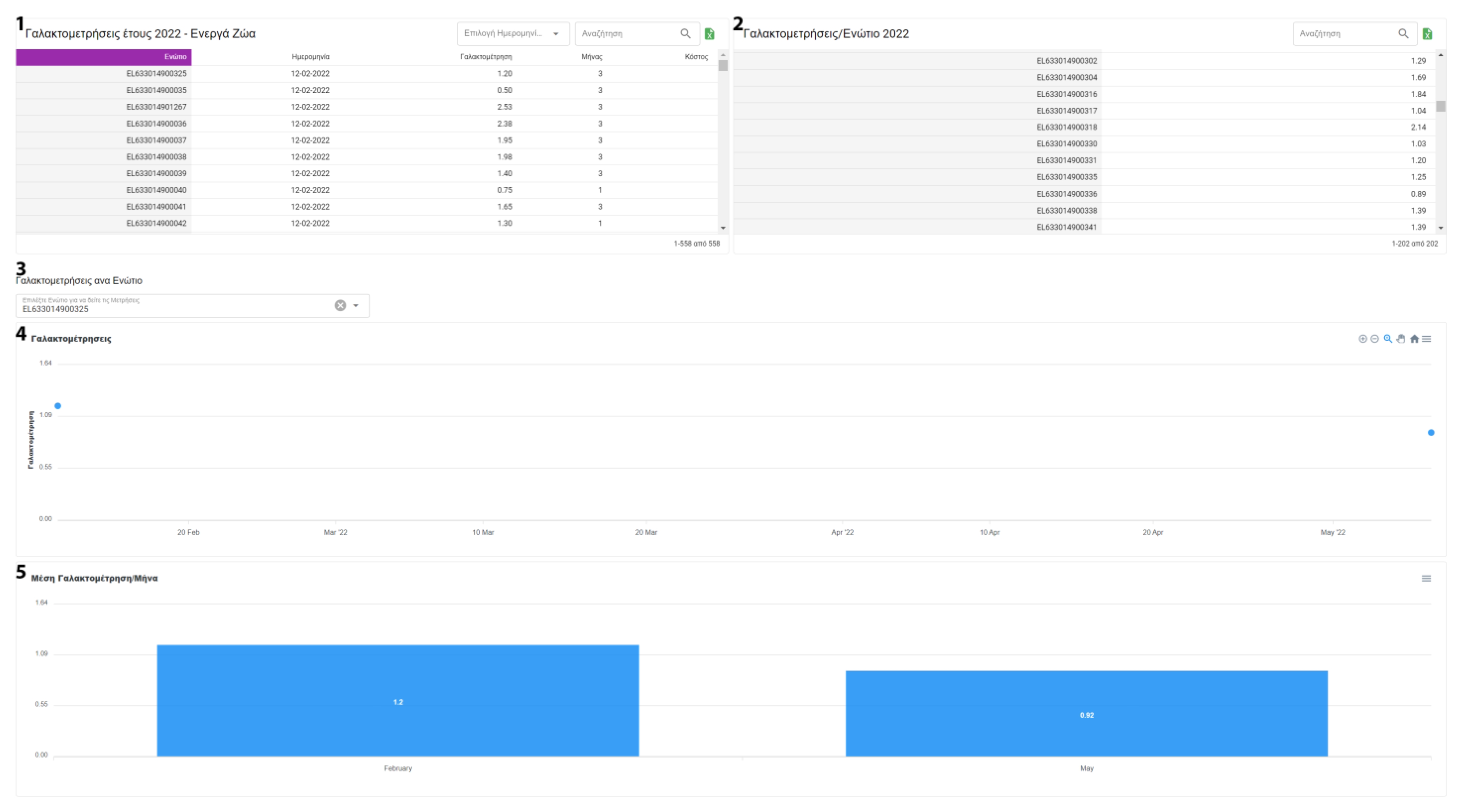
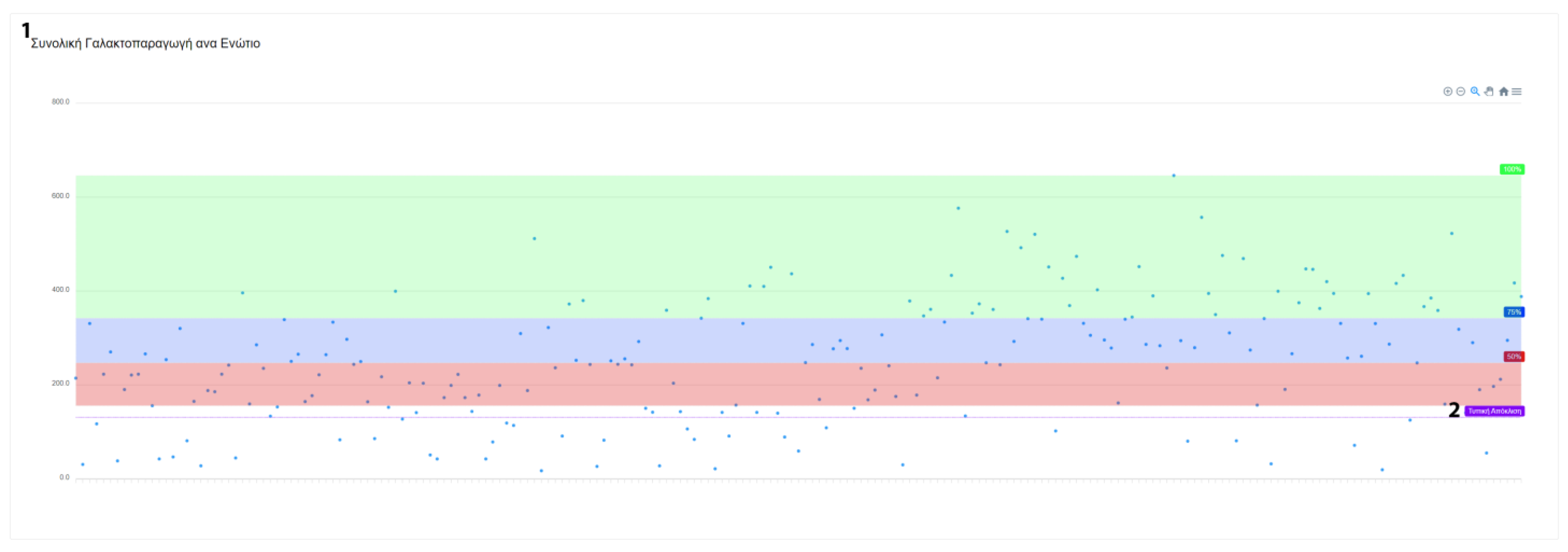

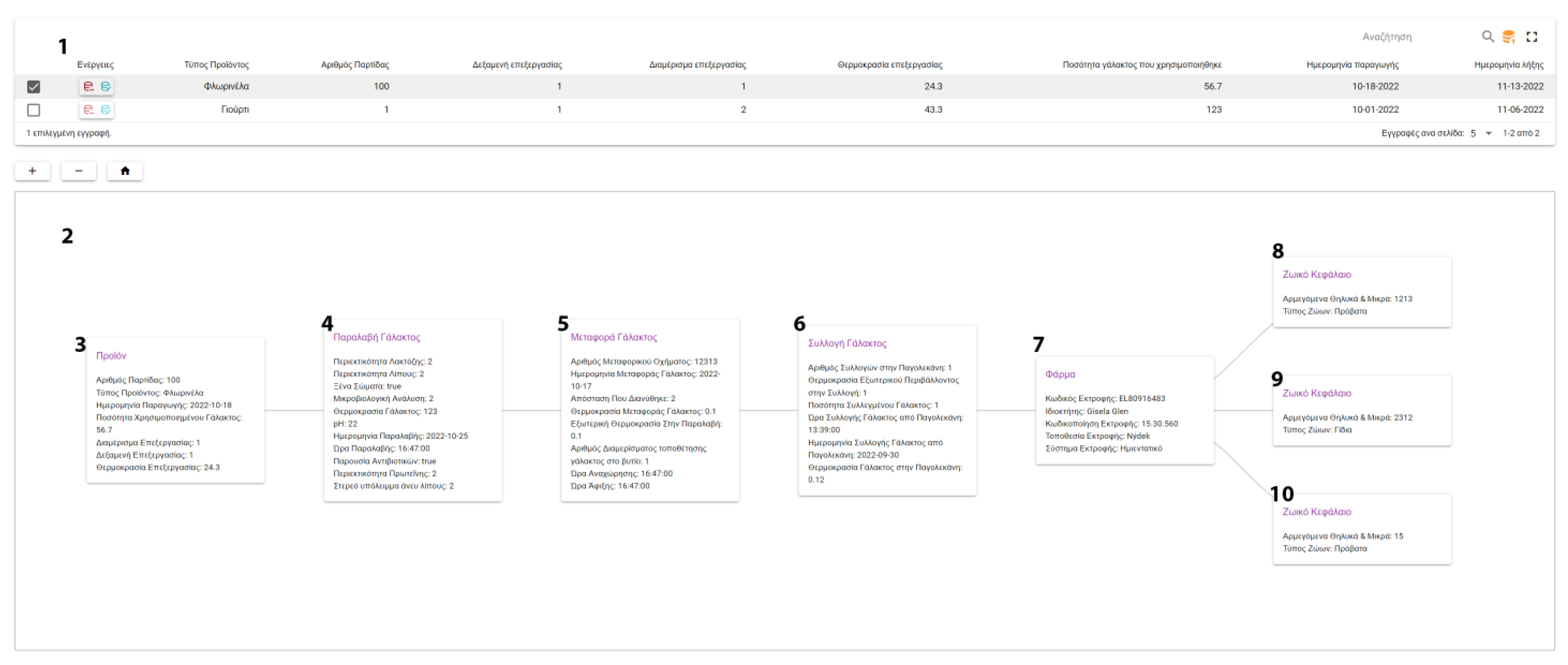
Disclaimer/Publisher’s Note: The statements, opinions and data contained in all publications are solely those of the individual author(s) and contributor(s) and not of MDPI and/or the editor(s). MDPI and/or the editor(s) disclaim responsibility for any injury to people or property resulting from any ideas, methods, instructions or products referred to in the content. |
© 2023 by the authors. Licensee MDPI, Basel, Switzerland. This article is an open access article distributed under the terms and conditions of the Creative Commons Attribution (CC BY) license (https://creativecommons.org/licenses/by/4.0/).
Share and Cite
Louta, M.; Karagiannis, P.; Papanikolopoulou, V.; Vouraki, S.; Tsipis, E.; Priskas, S.; Koutouzidou, G.; Theodoridis, A.; Dimitriou, S.; Arsenos, G. FarmDain, a Decision Support System for Dairy Sheep and Goat Production. Animals 2023, 13, 1495. https://doi.org/10.3390/ani13091495
Louta M, Karagiannis P, Papanikolopoulou V, Vouraki S, Tsipis E, Priskas S, Koutouzidou G, Theodoridis A, Dimitriou S, Arsenos G. FarmDain, a Decision Support System for Dairy Sheep and Goat Production. Animals. 2023; 13(9):1495. https://doi.org/10.3390/ani13091495
Chicago/Turabian StyleLouta, Malamati, Panagiotis Karagiannis, Vasiliki Papanikolopoulou, Sotiria Vouraki, Evangelos Tsipis, Stergios Priskas, Georgia Koutouzidou, Alexandros Theodoridis, Socratis Dimitriou, and Georgios Arsenos. 2023. "FarmDain, a Decision Support System for Dairy Sheep and Goat Production" Animals 13, no. 9: 1495. https://doi.org/10.3390/ani13091495
APA StyleLouta, M., Karagiannis, P., Papanikolopoulou, V., Vouraki, S., Tsipis, E., Priskas, S., Koutouzidou, G., Theodoridis, A., Dimitriou, S., & Arsenos, G. (2023). FarmDain, a Decision Support System for Dairy Sheep and Goat Production. Animals, 13(9), 1495. https://doi.org/10.3390/ani13091495






